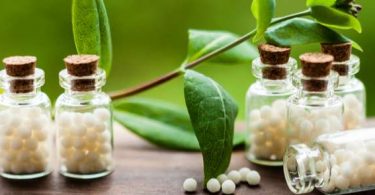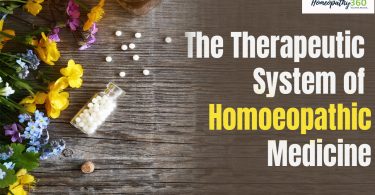Introduction
The Homeopathic Pharmaceutical products, as it is experienced so far, act as an essential vital segment of the health care and well being of the human beings to a greater extent. It is also important for conducting and/or researching on maintaining and restoring life. In this regard, it becomes a blessing and boon to us that in the last decade an evolutionary concept regarding the Quality Assurance and Quality Control of the Homeopathic Pharmaceutical product emerged and attained a great height conceptually and in practical segment also. These changes brought about in assuring the safety and therapeutic efficacy of the Homeopathic drug products. It depends on the prime factors – Internal and External relating to manufacturing of the Homeopathic medicines as well as concerned Pharmaceutical Industries. Internally, there are the self-designed Guidelines, the Industry has imposed on themselves, whereas External Guidelines are prepared and provided by the Law Enforcing Authority pertaining to Food and Drug Administration, titled as ‘Current Good Manufacturing Practices in Manufacture, Processing, Packing of the Pharmaceutical products, which obviously play an important role too.
The terms ‘Quality Control’ and ‘Quality Assurance’ are often used vice versa and interchangeably, depending upon the structure of a specific Company. Now-a-days, there is a continuous trend to separate and define their functions and responsibilities.
The term ‘Quality Control’ can broadly be defined as the day-to–day control of the quality to be maintained within a Homeopathic Pharmaceutical Industry, which, for the purpose, is required to be adequately staffed with Scientists and Qualified Technicians, responsible for the acceptance and/or rejection of incoming raw materials, to be used for preparing the Homeopathic Medicines and for packaging the components. Therefore, Quality Control includes not only the analytical testing of the finished products, but also the assessment of all operations beginning with right from receiving of the raw materials and continuing throughout the productions and packaging, finished products testing, documentation, surveillance and distribution.
‘Quality Assurance’, on the other, is the inherent, expressed and implied responsibility of an Organization, engaged in producing the medicines to assure and maintain the specified ingredients, properties and qualities of the drugs by way of meticulously following and executing the specifications, using adequately the systems, facilities and written procedures, meant for confirming and assuring that the products in process are duly controlled and as per specifications. Quality Assurance Unit of the said Organization should, therefore, develop some level of strict ‘Compliance’, ‘Confidence’ and ‘Comfort’ as per the company standards and Government regulations.
Total Quality Control –
The high quality of Homeopathic Pharmaceutical products result from meticulous adherence to written procedures in carrying out all the operations beginning with research. The raw materials must be characterized and purchased from the reputed and reliable suppliers so that the uniformity and stability of the finished products can be maintained. Facilities must be designed and the proper equipments be selected so that the potential for cross contamination of one product by another is eliminated. Air and water should be provided adequately. Production personnel must be properly trained to perform their jobs. The directions, they follow must be in written form, which are required to be approved by the respective Competent Authorities. Shipping departments should be responsible for ensuring that the products are protected from the adverse handling and environmental conditions are required to be given due cognizance while transiting the products to the distribution points and the Consumers. The Head of the Quality Control Section should ultimately be held responsible for rigidly maintaining the quality of the finished products, good-will and assuring the faith in the acceptability of finished products. The Quality Control function in an Organization normally depends on at least two primary units – Analytical Control and Inspection Control. 1
Analytical Control
The Analytical Control Laboratory of an Organization should be responsible for testing and approving raw materials, work in- process and finished products. The Laboratory must be staffed with persons, who are trained both – academically and by experience to perform the complex analysis, required to evaluate the acceptability of a product. Proper equipments are required for accurate analysis. Detailed specifications must also be required as it includes the criteria against which the product will be evaluated and the limits for acceptance and/or rejection for each critical parameters.
It requires to be ensured that the testing and acceptance of only high quality raw materials are essential in the preparation of the Homoeopathic medicines. It requires special mention that purchase of raw materials would only be acceptable from the known and reputable suppliers of those materials followed by testing of the materials. In many cases, it is necessary to inspect the supplier’s infrastructural facilities to determine its suitability and degree of compliance with GMP’s. In process, critical testing will vary depending on the dosage form being manufactured. Sterile products probably receive the most critical in- process control and testing in order to ensure that the finished product would be free from microbial contaminations.
Testing of the completed lot of a dosage form, in order to measure its conformance with predetermined specifications and appropriate acceptance criteria is always desirable before releasing the lot for shipment. Tests and specifications can be done as per the guidelines of Official Pharmacopoeias.
Inspection Control
It acts and includes with the sampling of raw materials, packaging and labeling components. The physical inspection of the products at various intermediate stages – packaging, line inspection and the control of the shipping-inventory within the distribution cycle is required to be arduously commissioned. Depending on the organizational structure, additional/ different responsibilities may be assigned accordingly to this unit.
Documentation
During the production of the Homeopathic Pharmaceutical products, numerous documents and records are usually generated. Each batch practically is assigned with a specific code/ lot number. All documentations relating to a specific code is known as ‘batch record’, which will include data on each significant phase of production, control and distribution. It also provides a historical blueprint of every step, beginning with the receipt of raw materials, packaging components and continuing through each in- progress stage. Recording charts provide the information regarding significant operations such as autoclaving, drying. air particulate monitoring, lyophilizing etc.. These all become the part of the Batch History. All documents and records relating to the specific batch are required to be given a final review. Each required documents and records must be checked for completeness and accuracy. Any discrepancy must be investigated and answered immediately. When the batch has been released, accurate shipping records must be maintained to show the batch distribution.
Quality Assurance
It is the duty of an individual and/or the concerned team to monitor the quality of the Homeopathic Pharmaceutical products through review and inspection. Normally, Standard Operating Procedures (SOP’s) are developed by the properly trained operators, which will help to assure the quality and integrity of the Homeopathic Pharmaceutical products. Therefore, the Quality Assurance review not only determines that the procedures are correct, but they are being followed. Quality of the Homeopathic Pharmaceutical products depend on a major degree upon the employees, engaged in the production operations. They should also remain responsible for the prescribed procedures along with their training and experience, which would able to produce uniformly acceptable products.
New Advances
In order to facilitating proper determination of the actual sample size, measuring the uniformity of the solid dosage forms and plotting trends of significant factors, the use of Statistics and Trend Analysis, as it is being experienced, are now being used by the Homeopathic Pharmaceutical Industries. This process in consequence effectively helps to ensure correctness of the control situations with a view to avoiding unacceptable product results. Electronic data processing has become another useful tool for assessing Process and Test Parameters. The control of many operations by Computers and Microprocessors are also providing the capability of producing products of uniform and improved quality.
Environmental Control
It is pertinent to mention that for preparation of the ophthalmic products, Microbiological Monitoring of air and water are essential. It is well known that according to Federal Government Standard 209B, ‘Clean Room, Work Stations and Controlled Environments’ are required for the said purpose. Another essential control procedure being the required parameter is the Microbiological Monitoring of the environment in which non-sterile products are manufactured. The objective of this monitoring is obviously to determine the microbial level within an area to assure that they are reasonable. If it is found to be excessive, steps are required to be taken to bring the level within the acceptable limits. If not, immediate corrective actions are warranted to be taken.
Good Manufacturing Practices
In June, 1963, The Food and Drug Administration issued, for the first time, Regulations describing the Good Manufacturing Practices, to be followed in the manufacture, packaging and holding of the finished pharmaceutical products. These Regulations underwent revision and updating in 1978 and came into effect from March, 1979.
Under the Federal Food, Drug and Cosmetic Act, a drug is deemed to be adulterated if the method, used in its manufacture, processing, packing, holding as well as the facilities and controls used, do not conform to the current Good Manufacturing Practice and the concerned drug fails to meet the safety requirements, stipulated under the said Act with the identity and strength to meet the quality and purity characteristics so required to have.
Good Manufacturing Practices cover various issues like facilities, designs, product delivery, validation issues etc… It is an interpretive and demand consistent evaluation technology. The nature of the Current Good Manufacturing Practices regulations are such that there is no ‘cookbook’ approach to design of Pharmaceutical Manufacturing Operations. Therefore, much disciplined approach is required to be ensured for strict adherence and compliance of the regulations in one hand as well as to meet the business goal for the operation on the other. Regular and periodical Input needs to be received from the various operating functions within the pharmaceutical plants so that all requirements are met. New technologies and additional tools are required to be deployed with a view to achieving the desired performances, result and efficacy and to meet the regulations. It should be kept in mind and it is the compulsion under the Food and Drug Administration that drug products should be suitable for their intended use according to the specific guidelines, to be followed religiously during the manufacturing process. It is no denying the fact that the sale and manufacture of drugs till those drugs reach the hands of the users mean and include proper packaging of the end products, distribution and sale of the same to the consumers. The packaging systems should therefore, be safe, efficient, proper and it should not compromise with the quality. 5
Conclusion
It is an established and acceptable fact that Homeopathy is the second largest system of medicine in the World as per World Health Organization. Homeopathic practice has gained a momentum in last two decades. As a system of therapeutics, Homeopathy has been proving itself as a very effective tool in curing the sick. In fact, it has propagated to every nook and corner of the World by the time. Large segment of population has learnt and experienced the benefits of Homeopathic treatment, which happens to be safe, simple and affordable comparable to other systems of treatment of ailments. It becomes one of the most acceptable systems of medicine, which is cost- effective. Only a small quantity of medicine is required to initiate curative process. Therefore, it is essential to judge the accuracy and genuineness of quality standards of the Homoeopathic Pharmaceutical products. Herein lies the impact and importance for ensuring the Quality Control and Quality Assurance of the Homoeopathic drugs and/or Homoeopathic Pharmaceutical products, which, in consequence, would impart the desired and effective curative process.
Bibliography
- http://www.ncbi.nlm.nih.gov/pubmed/9880948
- http://hpathy.com/editorials/who-report-on-the-safety-issues-in-the-preparation-of-homeopathic-medicines/
- https://books.google.co.in/books?id=EhjX517cGVsC&pg=PA39&lpg=PA39&dq=quality+control+of+homoeopathic+medicine&source=bl&ots=hyCMPRLqK1&sig=9T_69BY5ivY4BldSxKrhzOa9f8g&hl=en&sa=X&ei=UpkaVdHoPMbauQSTlYHQDg&ved=0CCIQ6AEwATgK#v=onepage&q=quality%20control%20of%20homoeopathic%20medicine&f=false
- http://www.fda.gov/Drugs/DevelopmentApprovalProcess/Manufacturing/ucm169105.htm





